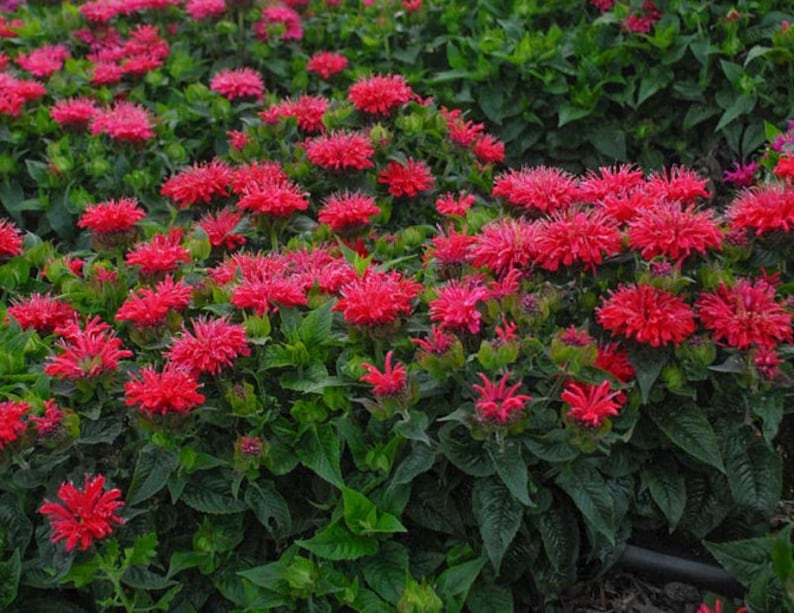
/bee-balm-red-big-565f9cd75f9b583386a59091.jpg)
The bee balm flower has an open, daisy-like shape, with tubular petals in shades of red, pink, purple, and white.

The distinctive "spiky hairdo" blooms are among their chief selling points, along with the plants' ability to attract bees, butterflies, songbirds, and hummingbirds to the garden landscape. Also known as bergamot and by its botanical name Monarda, bee balm is attractive to bees, butterflies, and hummingbirds. To plant seeds directly in your garden, wait until the weather is reliably warm. If you want to start bee balm plants from seeds, sow indoors about 8 weeks before the last frost.

But while the foliage is not particularly attractive, bee balms produce profuse hairy clusters of scarlet, pink, white, lavender, or purple tubular petals in terminal whorls, often with colored bracts, through a good portion of the summer. Plant your starts about 18 to 24 inches apart and keep the soil evenly moist while the plant establishes itself during the growing season. Bee balm is a somewhat weedy plant growing 10 inches to 4 feet tall, with oval leaves that are downy on the undersides. didyma as the principal parent, but there is often genetic contribution from other species, as well.
#Red bee balm plant how to#
Most named varieties sold as "Monarda" are hybrids with M. Find out everything you need to know about bee balm plants, from choosing the right variety to where and how to plant and care for them. Native to the North Carolina mountains, it may be seen along the Blue Ridge Parkway flowering during the summer months. Of the 15 or so species within the genus, the varieties sold in garden centers are usually hybrids and cultivars based on three species. Bee balm is an herbaceous perennial in the Lamiaceae (mint) family. Prized for its bright, vibrant flowers and long bloom season, bee balm comprises several species of native North American wildflower from the Monarda genus.


 0 kommentar(er)
0 kommentar(er)
